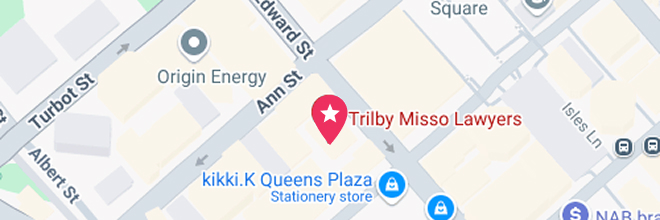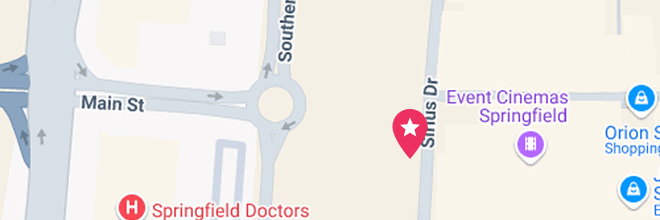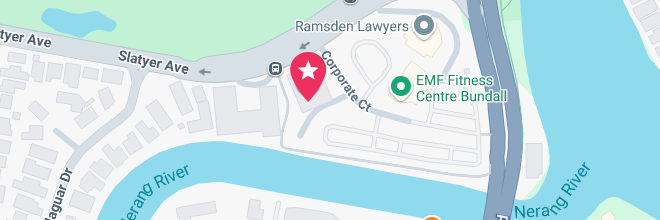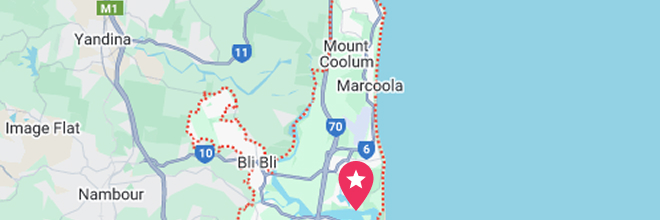Table of Contents
- Trilby Misso: A capable personal injury lawyer on the Sunshine Coast
- Why choose Trilby Misso as your personal injury lawyer on the Sunshine Coast?
- The Sunshine Coast’s key features
- The Sunshine Coast’s demographics
- The Sunshine Coast’s historical background
- The Sunshine Coast’s key attractions
- The Sunshine Coast’s micro-economy
- Education and healthcare on the Sunshine Coast
- Links for further reading
Visit Our Sunshine Coast Office
- M3-27, The Wharf Mooloolaba, 123 Parkyn Parade, Mooloolaba Qld 4557
- Monday-Friday 8:30am to 5pm
- (07) 5238 0600
 The Sunshine Coast’s key features
The Sunshine Coast’s key features
The Sunshine Coast is known for its stunning geographical features and diverse natural environment. Stretching from Caloundra in the south to the Cooloola Coast in the north, this region is a mix of coastal beauty and hinterland serenity.
One of its most prominent features is its long, uninterrupted coastline, which includes popular beaches such as Noosa, Mooloolaba, and Coolum. These beaches offer pristine sands and are bordered by the Pacific Ocean, providing excellent conditions for surfing, swimming, and other water activities.
The Sunshine Coast is also home to several rivers, with the Maroochy River and the Mooloolah River being among the most significant. These waterways, alongside smaller creeks and streams, support diverse ecosystems and offer peaceful spots for boating and fishing.
Beyond the coast, the region’s hinterland includes the Glass House Mountains, an iconic series of volcanic peaks rising dramatically from the surrounding plains. These mountains are sacred to the Indigenous Gubbi Gubbi people and are a popular destination for hiking and sightseeing. The Sunshine Coast is also home to national parks, such as Noosa National Park and Kondalilla National Park, which are renowned for their walking tracks, waterfalls, and native wildlife.
Summers are hot and humid, with average temperatures ranging from 21°C to 29°C, while winters are cooler and more pleasant, averaging between 10°C and 20°C. This climate supports lush vegetation, and combined with its natural beauty, the Sunshine Coast is a haven for nature lovers and outdoor enthusiasts.
 The Sunshine Coast’s demographics
The Sunshine Coast’s demographics
The Sunshine Coast is one of Australia’s fastest-growing regions, with a population of over 350,000 people as of recent estimates. This figure has been steadily increasing as more individuals and families seek the area’s coastal lifestyle, natural beauty, and growing employment opportunities. By 2041, projections suggest the population could surpass 500,000.
The region has a predominantly Australian-born population, with nearly 75% of residents being born in Australia. However, the area also attracts people from various parts of the world, particularly from New Zealand, the United Kingdom, and South Africa, contributing to its cultural diversity. Around 15% of the Sunshine Coast’s population was born overseas, creating a multicultural community with a range of cultural events and activities that reflect this diversity. Languages other than English spoken in the region include Italian, German, and Mandarin, although English remains the dominant language.
The Sunshine Coast is known for its laid-back lifestyle, which is centred around outdoor living, nature, and community activities. With a mix of urban hubs and quiet, suburban areas, it appeals to families, retirees, and young professionals alike. Noosa, Maroochydore, and Caloundra are among the busiest towns, offering a range of recreational, shopping, and dining options. The area’s strong sense of community is reflected in numerous local markets, festivals, and outdoor events that take place year-round.
The region has a significant proportion of retirees, contributing to a slower-paced lifestyle in certain areas, but it also has a growing number of young families and professionals due to improved infrastructure and economic growth. This diversity in age and backgrounds gives the Sunshine Coast a dynamic community feel, blending traditional coastal living with modern conveniences and cultural influences.
 The Sunshine Coast’s historical background
The Sunshine Coast’s historical background
The Sunshine Coast has a rich history that spans both Indigenous and European settlement. Before European colonisation, the area was home to the Gubbi Gubbi people, who lived along the coast and in the hinterlands for thousands of years. They were skilled hunters, gatherers, and fishers, using the land’s natural resources to sustain their communities. The Glass House Mountains held special spiritual significance to the Gubbi Gubbi, with many Dreamtime stories connected to the volcanic peaks.
European exploration began in the 1770s when Captain James Cook sailed along the eastern coast of Australia and named the Glass House Mountains. In the early 19th century, explorers and settlers began moving into the region. The Sunshine Coast initially developed as a series of small, isolated settlements, primarily focused on timber, farming, and fishing. The timber industry thrived due to the dense forests, particularly around the Blackall Range, which supplied timber for the rapidly growing colonies.
In the late 19th century, small farming communities began to develop, with sugar cane, pineapples, and bananas being key crops. By the early 20th century, the region also became a popular tourist destination, particularly for Brisbane residents seeking a coastal retreat. The construction of railways and roads improved accessibility, contributing to the region’s growth.
The area officially adopted the name “Sunshine Coast” in 1967, reflecting its identity as a prime destination for both tourism and coastal living. Over the decades, the population increased rapidly, and with infrastructure development, the region transitioned from a string of small townships to a cohesive urban area. Today, the Sunshine Coast is known for its combination of natural beauty, thriving tourism industry, and growing residential areas, while still maintaining its laid-back coastal charm.
 The Sunshine Coast’s key attractions
The Sunshine Coast’s key attractions
The Sunshine Coast is a renowned destination for both tourists and locals, offering a variety of attractions and activities that cater to a range of interests. One of the most iconic tourist spots is Noosa National Park, known for its picturesque coastal walks, stunning beaches, and the chance to spot wildlife such as koalas and dolphins. Another key natural attraction is the Glass House Mountains, where visitors can hike, rock climb, or simply enjoy the scenic views of the volcanic peaks.
For those interested in history and culture, the Sunshine Coast’s Regional Art Gallery in Caloundra and the Eumundi Markets offer insight into the region’s artistic and creative community. The Eumundi Markets, held every Wednesday and Saturday, are one of the largest artisan markets in Australia.
The Sunshine Coast is also famous for its beaches, such as Mooloolaba and Coolum, which provide opportunities for surfing, swimming, and paddleboarding. For those looking for a more laid-back experience, the Maroochy River offers boating, fishing, and kayaking. Families visiting the region can enjoy attractions such as Australia Zoo, established by the late Steve Irwin, which is a major drawcard with its wide range of animal exhibits and wildlife conservation efforts.
For children and families, SEA LIFE Sunshine Coast in Mooloolaba offers an interactive and educational experience with its marine exhibits. The region is also home to numerous festivals, such as the Noosa Festival of Surfing and the Horizon Festival, which celebrate the area’s culture, arts, and lifestyle. With its blend of outdoor activities, cultural spots, and family-friendly attractions, the Sunshine Coast offers something for everyone to enjoy.
 The Sunshine Coast’s micro-economy
The Sunshine Coast’s micro-economy
The economy of the Sunshine Coast is diverse and rapidly growing, with a range of industries contributing to its development. One of the key industries is tourism, which benefits from the region’s natural beauty, drawing both domestic and international visitors. Popular destinations like Noosa, Mooloolaba, and Australia Zoo support a robust hospitality sector, including hotels, restaurants, and local tour operators. Tourism remains a major employer, providing jobs in accommodation, food services, and retail.
Another important sector is healthcare, with the Sunshine Coast University Hospital acting as a major employer and healthcare hub for the region. The development of health precincts around the hospital has spurred further growth in medical research, aged care, and specialist services. Education also plays a significant role, with University of the Sunshine Coast (USC) attracting students and contributing to the region’s knowledge economy.
Construction and real estate are booming, driven by the Sunshine Coast’s population growth and infrastructure projects. Residential and commercial developments are on the rise, particularly around Maroochydore, which is being developed as a new central business district. This urban renewal project is part of the region’s broader economic development plan aimed at modernising infrastructure and boosting employment.
Local businesses and entrepreneurship thrive on the Sunshine Coast, particularly in creative industries, agribusiness, and technology. The Sunshine Coast Innovation Centre, located at USC, provides a platform for start-ups and entrepreneurs to grow, with support for businesses in sectors such as digital technology, clean energy, and manufacturing. The region’s agricultural industry also continues to be a pillar of the economy, with a focus on high-quality local produce, including fruit, dairy, and seafood.
Overall, the Sunshine Coast’s economy is becoming more diversified, with a focus on sustainable growth, innovation, and attracting investment in industries that support long-term employment and economic resilience.
 Education and healthcare on the Sunshine Coast
Education and healthcare on the Sunshine Coast
The Sunshine Coast offers a strong network of educational and healthcare facilities, catering to the growing population in the region. The education sector includes a mix of public and private schools, as well as tertiary institutions. Primary and secondary schools are distributed across the region, with notable institutions such as Sunshine Coast Grammar School, Matthew Flinders Anglican College, and Maroochydore State High School providing high-quality education. The public school system is managed by Education Queensland, which ensures access to well-resourced schools for local families.
In terms of higher education, the University of the Sunshine Coast (USC) plays a central role in providing tertiary education to students both from the region and beyond. USC offers a range of undergraduate and postgraduate degrees, including courses in health sciences, business, engineering, and environmental studies. The university is also involved in research and innovation, contributing to the local economy and workforce development. Additionally, TAFE Queensland has several campuses on the Sunshine Coast, offering vocational training and technical education in various trades and professional fields.
The region’s healthcare facilities are well-developed, anchored by the Sunshine Coast University Hospital in Birtinya. Adjacent to it, the Sunshine Coast Health Institute fosters medical research and training. The region also has several other hospitals, such as Nambour General Hospital and Noosa Hospital, which offer a wide range of healthcare services to the community.
Here’s how our ‘no win no fee’ process works:
-
We chat
 It’s a free consultation.
It’s a free consultation. -
We meet
 A free detailed discussion.
A free detailed discussion. -
We plan
 You say ‘go’ – we build your case.
You say ‘go’ – we build your case. -
We lodge
 We present
We present
your case. -
We conclude
 We reach a settlement.
We reach a settlement.
You pay nothing until you win
We’ll also provide certainty and clarity, with a fair structure that has no ‘uplift’ fee, ever. You’ll pay nothing ‘til your claim is won.
Don’t delay. Speak with Trilby Misso today.
Your next step is a small one. All you need to do is give us a call on 1300 731 671 or complete this form here to arrange a quick chat.
During this initial conversation, we will:
- Have a chat about the circumstances and nature of your injury.
- Give you an indication of your eligibility to make a claim for compensation.
- Explain, in simple terms, how our process works. We will answer
any questions you have about fees, the legal process, and anything else you’re unsure about relating to your injury.
We understand that taking legal action can be stressful, and we’ll do all we can to ease your concerns.
The chat can take place at our place, your place, or by phone. There is no cost, no pressure, and no obligation.

Call 1300 731 671 or fill out this form, and we’ll get back to you within 2 hours (during business hours). We look forward to meeting you.






